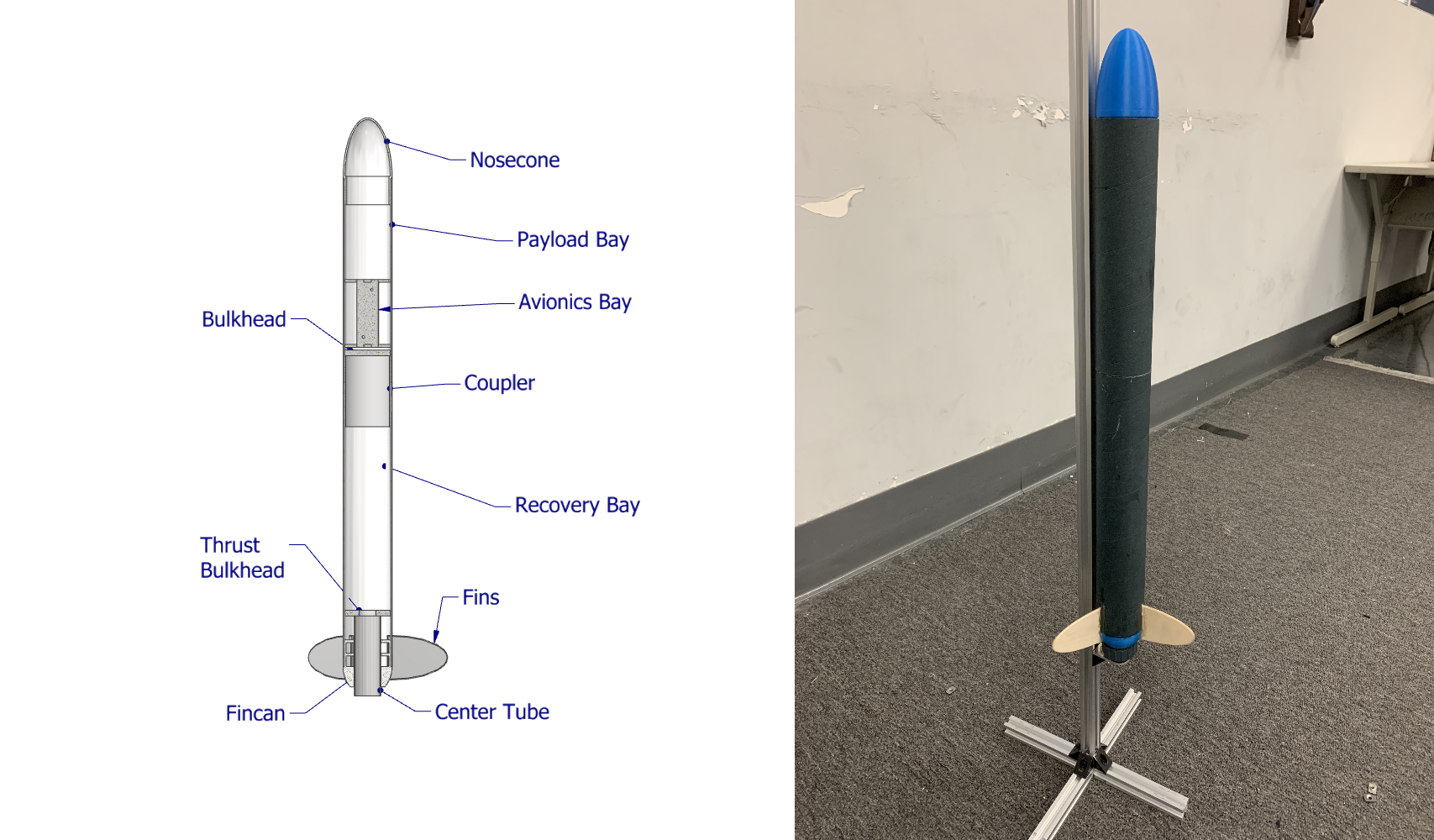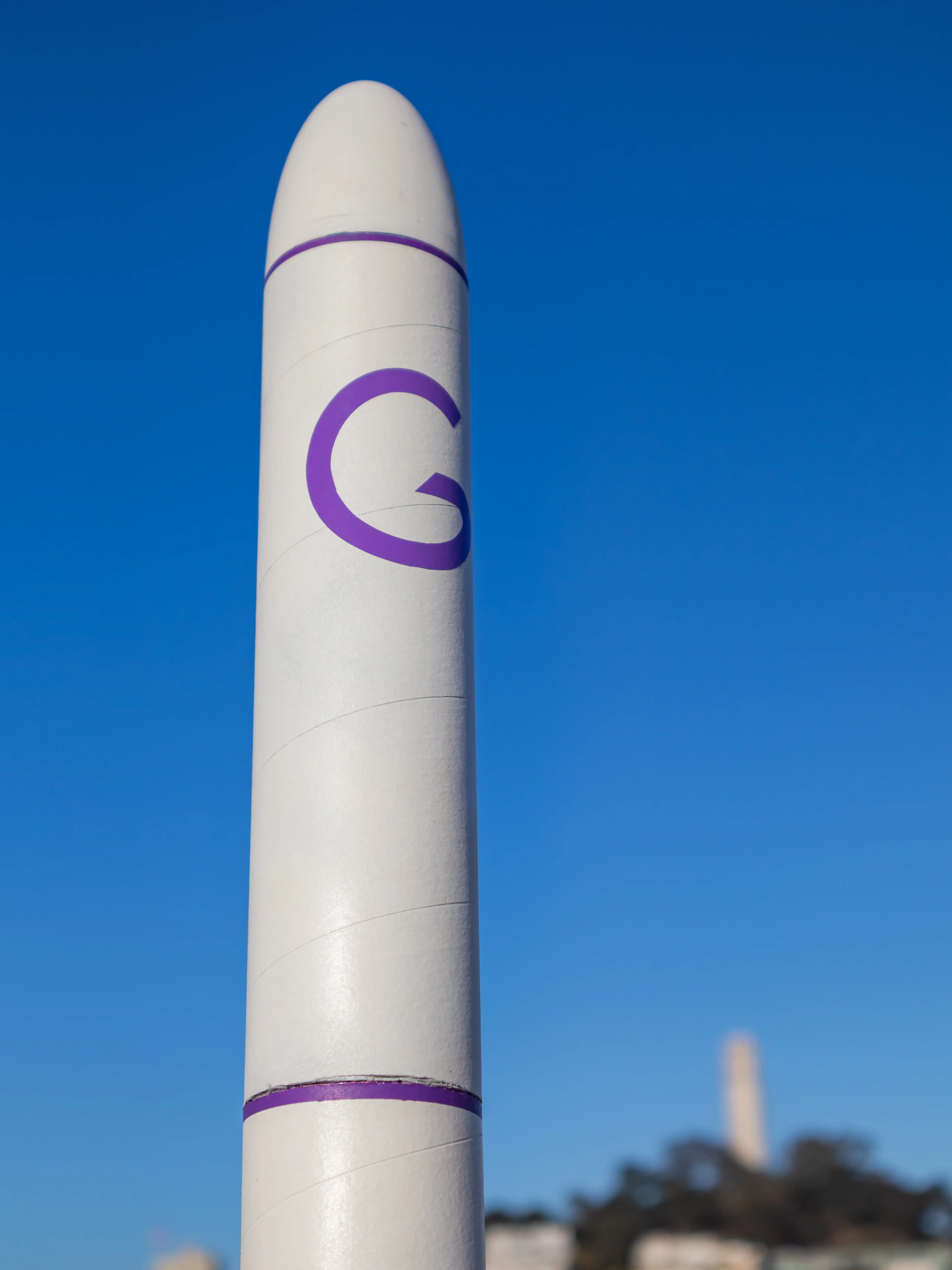Halya
The Rocket
Halya is being designed to compete in the FAR-MARS competition, meeting these primary design goals:
Liquid methane fuel and liquid oxygen oxidizer
Maximum impulse of 9208 lb-s
Full parachute recovery
Static test fire
Additionally, in order to achieve these design objectives, Halya will feature a common bulk-head
fuel tank, dual-deployment recovery system, composite fins and aeroshell panels, and a hybrid
longeron structure. Halya is a strong contender for the competition and will be SEDS UCSD's most
powerful rocket.
Statistics
| Fuel | Methane - Liquid Oxygen |
| Target Height | 40,000 ft |
| Length | |
| Diameter | 6.5 in |
| Dry Mass | 120 lbm |
| Thrust | 2000 lbf |
| Burn Time | |
| Pressure System | |




 Rocket Diagram and Unpainted Rocket
Rocket Diagram and Unpainted Rocket
 Finished and Painted Rocket
Finished and Painted Rocket CNC Milling the Fins/Bulkheads
CNC Milling the Fins/Bulkheads 3D Printing the Nosecone and Boattail
3D Printing the Nosecone and Boattail